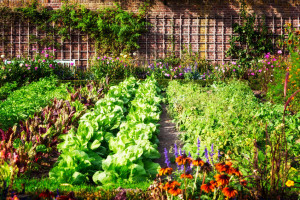These Gardening Tips Will Have Vegetables on Your Table Throughout the Season
 If you would like to enjoy vegetables from your garden every day of the year, rather than being flooded by one large harvest in late summer and fall, you may want to try succession planting. There are a few gardening tips that can help you get organized with a plan to make the most of your plot this year:
If you would like to enjoy vegetables from your garden every day of the year, rather than being flooded by one large harvest in late summer and fall, you may want to try succession planting. There are a few gardening tips that can help you get organized with a plan to make the most of your plot this year:
Think about the vegetables you enjoy, and gather some information. Seed packets and catalog descriptions provide helpful information about frost tolerance, when to plant, how many days it will take the plant to reach maturity and the average size of plants. Make a few notes about the plants you hope to grow this season and their relative growing times.
Create a few diagrams. Consider making a few drawings of your garden, one each for spring, summer and fall. You can organize your plants based on how fast they grow. Some varieties, such as peppers and tomatoes will harvest for several weeks, while other plants require a long growing time with one big harvest at the end, such as squash, corn and Brussels sprouts. Other vegetables, such as carrots, can be sown in early spring and then again in late summer for two good harvests in summer and fall.
You can also plan for some rows of lettuce that you’ll sow weekly to enjoy fresh salad on your table every night, rather than one big flood of lettuce that you’ll struggle to eat before it goes limp.
Consider roots and growth height. When planning your succession, one of the more strategic gardening tips is to include the root spread and growth height of preferred plants into your planning. You can pack more vegetables into your garden if they are organized well according to root structure and the height of your plants. You won’t want to plant corn, for instance, next to a shorter plant that will miss out on necessary sun exposure.
Think about your canning needs. Do you plan to can or freeze some of your bounty? It makes good sense to plant a few varieties that have one big harvest so that you can efficiently plan your canning schedule and get some vegetables put away for winter. These include indeterminate tomatoes, bush beans and some varieties of broccoli.
Do some research on your climate. You may be able to grow more into late fall and even through winter if you live in the right climate. Tame winters allow for peas, cabbage, kale and a host of other plants to be harvested throughout the winter months, and warm climates are great for growing melons and eggplant in the summers.
Succession planting can be a bit of a puzzle, so one of the best gardening tips is to get organized with Kincaid Plant Markers. Made for a lifetime of gardening, these markers will help you manage a strategy for keeping fresh vegetables on your table all year long. Be sure to visit our product page for more information.
